Designing a Climate-Resilient Environmental Curriculum—A Transdisciplinary Challenge
Abstract
:1. Introduction
2. Method
2.1. Context and Participants
2.2. Data Collection and Analysis
2.3. Research Ethics and Insider–Outsider Issues
3. Results and Discussion
3.1. Rubrics Briefing and Results
3.2. Interview Results
3.2.1. Comparison
For example, we were asked to record traffic conditions in Year 1 and, at that time, we had no idea what this was about and whether the data were useful in practical modules. Tutors asked us to do the task, and we did it. When we took the Transportation module in Year 2, the most common feeling was: “Oh, that is it”. We suddenly realized why we did traffic condition records in Year 1, and what and how the data could be used.(S10)
It is easier to know than to do. My studies have always been in the rational thinking route, which means I have no talent in art. Drawing and sketching require a sense of art, and I don’t have it. I thought doing planning was all about writing reports, but why did we have to study drawing and sketching?(S28)
My wish was to become a successful real estate salesman. My rationale for studying in the architecture department was to understand architecture and enrich my knowledge. When I become a salesman, my clients will have more confidence in me. Since I did not want to be an architect, spending an extra 20 h a week or more creating architectural drawings was nonsense to me.(S35)
3.2.2. Transdisciplinary Studies
Two things made me take modules outside our department: one was that our department did not provide enough modules for us to choose, and the other was that some fields, such as economy and law, the specialists were not in our department. If I wanted to gain that knowledge, I had to take transdisciplinary modules.(S1)
I wanted to improve my skills in 3D design and animated simulation because my senior colleague told me these were very important and helpful in my career, but our department only provided an introductory module without advanced modules. That was why I had to take advanced modules at the College of Journalism and Mass Communications and College of Arts.(S3)
There was a decline in motivation to strive for the practical module amongst my classmates. The reasons were multi-dimensional. Some were fed up with the enormous tasks and challenges, some simply had no interest in the module whatsoever, some were busy doing their part-time jobs and could not work together with mates, etc. I do not think that tutors comprehend these conditions–tutors always said: “that is your problem, and you have to solve it”. In fact, we are classmates and peer-pressure is weak nowadays, so we could either have someone in the team covers our work, or just let them pull the team back. Tutors have to seriously face the problem and restructure the curriculum in terms of task setup and group formation, and, most importantly, allow us to participate in the discussion. Therefore, our real needs would be understood.(S13)
3.2.3. Tutors’ Perspectives and Responses
Perhaps the tough training programs and enormous assignments scared many students in my class and made them stand back. As far as I know, there are at least six students who wanted to transfer to other departments or even universities.(Tutor E)
Recently, some students are interested in methods of presentation such as 3D models and animated simulations rather than seriously discussing on-site issues. Certainly, they will do well if they work in the graphic design and animation industry, and we have to acknowledge finding jobs in the planning and design field is difficult According to the last two years’ survey, only 50% or fewer students work in the planning and design field after graduation. The job market simply cannot provide sufficient room for our students. Why don’t we offer them more choices to develop their skills and increase their opportunities to have a job after university?(Tutor F)
One important and basic skill in planning and design fields is drawing. Planners and designers rely heavily on drawing to communicate with others. Becoming Picasso requires a gift, but to have a sufficient skill in drawing only needs practice, practice, and practice. This is different from analyzing site data or producing great plans and designs. The drawing skill only requires time to build.(Tutor B)
Planning and design follow a logical procedure, without such a procedure, students’ ideas in planning and design might sometimes be unrealistic and cannot be implemented. The cause and effect ideology in the planning and design field is crucial to the creation of solution. Students need to be trained properly to gain the skills, especially concerning their jobs after university.(Tutor A)
If students could survive the pressures in class, they generally performed well. Those students that either heeded our advice or proactively made decisions to choose modules in other departments performed better than others. The outcomes were significantly different than seen from their weekly homework, year review presentations, and final marks of modules, especially the practical modules. Their work was more mutual and holistic than others, when they applied knowledge from other fields to strengthen their views in particular.(Tutor D)
If the pace of the practical modules is synchronized with the related professional modules, the pace of practical modules will be too slow. If the related modules want to catch up with the practical modules, students will not be able to sustain the pace, study the quantities of knowledge, and cope with the tasks and assignments in every module. Moreover, I wonder the extent to which students are capable of absorbing the knowledge, digesting it, and putting it into practice within such a short time period. Mission impossible. What we can do in the moment is to make the learning by doing approach easier for students to adopt than textbooks.(Tutor C)
Students’ duty is to study. That is the meaning of going to university. If a student has to have a part-time job to sustain their livelihood, they should consider quitting university and finding a full-time job and, as soon as the expenses can be afforded, return to university to obtain the certificate. I have seen many students who could not do both things well and they learnt nothing or little from university. Some say that people with a senior high school diploma cannot find a proper job. I say that four years (typical university years) can conquer any difficulty if one works hard. To be honest, the purpose of having part-time job for many students is to buy computer, communication, and consumer electronics products like iPhones and pay for entertainment expenses, rather than sustaining them; it is just an excuse. If we push students harder, they will achieve more later. Believe me, they have potential and, do not forget, those who sow with tears will reap with songs of joy. We continuously tell students this principle every semester, but it seems that students do not remember it.(Tutor A)
When departments hold module meetings, student representatives were invited to participate in the meetings to have their say. If we apply the same scheme to the curriculum design, students will have opportunities to express their views and demands and we can adjust the curriculum design accordingly. In the end, students will be willing to actively study the practical modules.(Tutor C)
Letting students have their say will help us to shorten the gap between teaching and learning, and, I believe, improve the teacher-student relationship.(Tutor F)
I cannot see the point of letting students participate in the curriculum design. If they have any comment, they can express their concerns in module meetings. There is already an official channel for them; we do not have to establish another one.(Tutor A)
We tried the participatory approach many years ago, but it failed. What happened was that student representatives had little to say because most students’ opinions were not constructive. Many of their suggestions were unrealistic. That is why, I believe, it will be the same if we do it again.(Tutor B)
About 10 year ago we had similar scheme allowing students to express their concerns about curriculum design. Although we were implementing the university’s policy, some achievements were made in my department. Nowadays students demand equality and justice in everything, we should accept their demands and see what happens. We can adjust the curriculum design anytime if something goes wrong.(Tutor D)
Today’s students tend to be self-centered and unless they know the reason for doing something, they would not follow the given orders. Students’ attitudes toward the practical module between the three departments are considerably different. Students in other departments know their goals, but students in our department have little idea about what they will do and will become. As a consequence, even though the tutors in the three departments are tough and strict, their students managed to survive and conquer the difficulties. In contrast, our students have always tried to escape the pressure by collectively ignoring module requirements. In other words, tutors in the other two departments used to be dominating and had no sense of participation with students, whereas our tutors used to negotiate with students, and participation is not unusual in my department.(Tutor E)
4. Conclusions
Acknowledgments
Author Contributions
Conflicts of Interest
References
- Marzano, R.J.; Pickering, D.J.; Pollock, J.E. Classroom Instruction that Works; Association for Supervision & Curriculum Development: Alexandria, VA, USA, 2001. [Google Scholar]
- Dick, W.; Carey, L.; Carey, J.O. The Systematic Design of Instruction; Pearson Higher Education: San Francisco, CA, USA, 2005. [Google Scholar]
- Bendito, A.; Barrios, E. Convergent Agency: Encouraging Transdisciplinary Approaches for Effective Climate Change Adaptation and Disaster Risk Reduction. Int. J. Disaster Risk Sci. 2016, 7, 430–435. [Google Scholar] [CrossRef]
- Zscheischler, J.; Rogga, S.; Busse, M. The Adoption and Implementation of Transdisciplinary Research in the Field of Land-Use Science—A Comparative Case Study. Sustainability 2017, 9, 1926. [Google Scholar] [CrossRef]
- Lang, J. Teaching planning to city planning students. An argument for the studio/workshop approach. J. Plan. Educ. Res. 1983, 2, 122–129. [Google Scholar]
- Schank, R.C.; Berman, T.R.; Macpherson, K.A. Learning by Doing. In Instructional-Design Theories and Models: A New Paradigm of Instructional Theory; Lawrence Erlbaum Associates, Inc.: Mahwah, NJ, USA, 1999; pp. 161–181. [Google Scholar]
- Felder, R.M.; Brent, R. Learning by doing. Chem. Eng. Educ. 2003, 37, 282–309. [Google Scholar]
- Liu, L.-W. Local Connection and International Participation: A Teaching Experiment and Preliminary Practice on Real-World Problem-Solving, Intercollegiate Competition and Collaboration, and Transnational Interactive Learning. J. City Plan. 2007, 34, 363–383. [Google Scholar]
- Innes, J.E. Planning theory’s emerging paradigm: Communicative action and interactive practice. J. Plan. Educ. Res. 1995, 14, 183–189. [Google Scholar] [CrossRef]
- Apostel, L. Interdisciplinarity Problems of Teaching and Research in Universities; Organisation for Economic Co-Operation and Development: Paris, France, 1972. [Google Scholar]
- Klein, J.T. Crossing Boundaries: Knowledge, Disciplinarities, and Interdisciplinarities; University of Virginia Press: Charlottesville, VA, USA, 1996. [Google Scholar]
- Godemann, J. Knowledge integration: A key challenge for transdisciplinary cooperation. Environ. Educ. Res. 2008, 14, 625–641. [Google Scholar] [CrossRef]
- Kramm, J.; Pichler, M.; Schaffartzik, A.; Zimmermann, M. Societal Relations to Nature in Times of Crisis—Social Ecology’s Contributions to Interdisciplinary Sustainability Studies; Multidisciplinary Digital Publishing Institute: Basel, Switzerland, 2017. [Google Scholar]
- Forester, J. Critical Theory, Public Policy, and Planning Practice; SUNY Press: Albany, NY, USA, 1993. [Google Scholar]
- Chapin, F.S. Dr. Chapin Recalling the Early Days of the Department, i.e., The University of North Carolina Planning Department. 2010. Available online: http://www.theamericancity.org/wp-content/uploads/2015/06/Urban-Land-Use-Planning.pdf (accessed on 28 December 2017).
- Kaiser, E.J.; Godschalk, D.R.; Chapin, F.S. Urban Land Use Planning; University of Illinois Press: Urbana, IL, USA, 1995; Volume 4. [Google Scholar]
- Yu, C.-Y. Public Engagement with Protected Area Policy: A Governmentality Perspective. Ph.D. Thesis, School of Geography and Planning, Cardiff University, Cardiff, UK, 2009. [Google Scholar]
- World Commission on Environment and Development. Our Common Future; World Commission on Environment and Development: Oxford, UK, 1987. [Google Scholar]
- Cullingworth, J.B.; Nadin, V. Town and Country Planning in the UK; Psychology Press: London, UK, 2002. [Google Scholar]
- College of Environmental Design. History of the College. Available online: http://crt.pccu.edu.tw/files/11-1032-3039.php?Lang=zh-tw (accessed on 15 June 2017).
- Yu, C.-Y.; Wang, S.-H.; Lee, D.-S. Module Introduction. Available online: http://icas.pccu.edu.tw/asst/courses.aspx?dept=UTUPD&fontsize=0.9&iframe=courseInfo (accessed on 23 April 2017).
- Lee, C.-L.; Kuo, W.-L.; Martinelli, A. Module Introduction. Available online: http://www2.pccu.edu.tw/CRTDLA/data/%E6%99%AF%E8%A7%80%E7%B3%BB(%E6%89%80)%E5%AD%B8%E7%BF%92%E5%9C%B0%E5%9C%96_980902.pdf (accessed on 26 January 2017).
- Chiang, Y.-C.; Huang, K.-T. Module Introduction. Available online: http://crtadp.pccu.edu.tw/files/14-1163-59679,r1221-1.php?Lang=zh-tw (accessed on 23 April 2017).
- Urban and Rural Development Branch, Construction and Planning Agency. Manual of Urban Planning Procedure; Urban and Rural Development Branch, Construction and Planning Agency, Ministry of the Interior: Taipei, Taiwan, 2012. [Google Scholar]
- Laseau, P. Graphic thinking for Architects and Designers; John Wiley & Sons: New York, NY, USA, 2001. [Google Scholar]
- White, E.T. Site Analysis: Diagramming Information for Architectural Design; ArchiBasX Press: Arlington, VA, USA, 2013. [Google Scholar]
- Kruger, C.; Cross, N. Solution driven versus problem driven design: Strategies and outcomes. Des. Stud. 2006, 27, 527–548. [Google Scholar] [CrossRef]
- Jonassen, D.H.; Hung, W. All Problems are Not Equal: Implications for Problem-Based Learning. Interdiscip. J. Probl. Based Learn. 2008, 2, 6–28. [Google Scholar] [CrossRef]
- Mueller, S. Problem vs. Solution Focused Thinking. Available online: http://www.planetofsuccess.com/blog/2011/problem-vs-solution-focused-thinking/ (accessed on 16 April 2017).
- Bryman, A. Social Research Methods; Oxford University Press: Oxford, UK, 2001. [Google Scholar]
- Sarantakos, S. Social Research, 2nd ed.; MacMillan: Basingstoke, UK, 1998. [Google Scholar]
- Bryman, A.; Cramer, D. Quantitative Data Analysis with SPSS Release 10 for Windows: A guide for Social Scientists; Routledge: London, UK, 2002. [Google Scholar]
- Ritchie, J.; Spencer, L. Qualitative data analysis for applied policy research. In Analysing Qualitative Data; Bryman, A., Burgess, R.G., Eds.; Routledge: London, UK; New York, NY, USA, 1994. [Google Scholar]
- Banks, J.A. The lives and values of researchers: Implications for educating citizens in a multicultural society. Educ. Res. 1998, 27, 4–17. [Google Scholar] [CrossRef]
- Merriam, S.B.; Johnson-Bailey, J.; Lee, M.Y.; Kee, Y.; Ntseane, G.; Muhamad, M. Power and positionality: Negotiating insider/outsider status within and across cultures. Int. J. Lifelong Educ. 2001, 20, 405–416. [Google Scholar] [CrossRef]
- Blake, J. Community and Environmental Attitudes and Actions in Huntingdonshire: Report of the Baseline Research for the Huntingdonshire Going for Green Sustainable Communities Project; Committee for Interdisciplinary Environmental Studies: Cambridge, UK, 1997. [Google Scholar]
- Hickey, S.; Mohan, G. Participation—From Tyranny to Transformation? Exploring New Approaches to Participation in Development; Zed Books: New York, NY, USA, 2004. [Google Scholar]
- Ostrander, S.A. Democracy, civic participation, and the university: A comparative study of civic engagement on five campuses. Nonprofit Volunt. Sect. Q. 2004, 33, 74–93. [Google Scholar] [CrossRef]
- Rose, D.H.; Meyer, A. Teaching Every Student in the Digital Age: Universal Design for Learning; ERIC: Alexandria, VA, USA, 2002.
- Collins, A.; Halverson, R. Rethinking Education in the Age of Technology: The Digital Revolution and Schooling in America; Teachers College Press: New York, NY, USA, 2009. [Google Scholar]
- Evans, N.J.; Forney, D.S.; Guido, F.M.; Patton, L.D.; Renn, K.A. Student Development in College: Theory, Research, and Practice; John Wiley & Sons: New York, NY, USA, 2009. [Google Scholar]
- Fishman, B.J.; Marx, R.W.; Best, S.; Tal, R.T. Linking teacher and student learning to improve professional development in systemic reform. Teach. Teach. Educ. 2003, 19, 643–658. [Google Scholar] [CrossRef]
- Cronin-Jones, L.L. Science teacher beliefs and their influence on curriculum implementation: Two case studies. J. Res. Sci. Teach. 1991, 28, 235–250. [Google Scholar] [CrossRef]
- Christophel, D.M. The relationships among teacher immediacy behaviors, student motivation, and learning. Commun. Educ. 1990, 39, 323–340. [Google Scholar] [CrossRef]
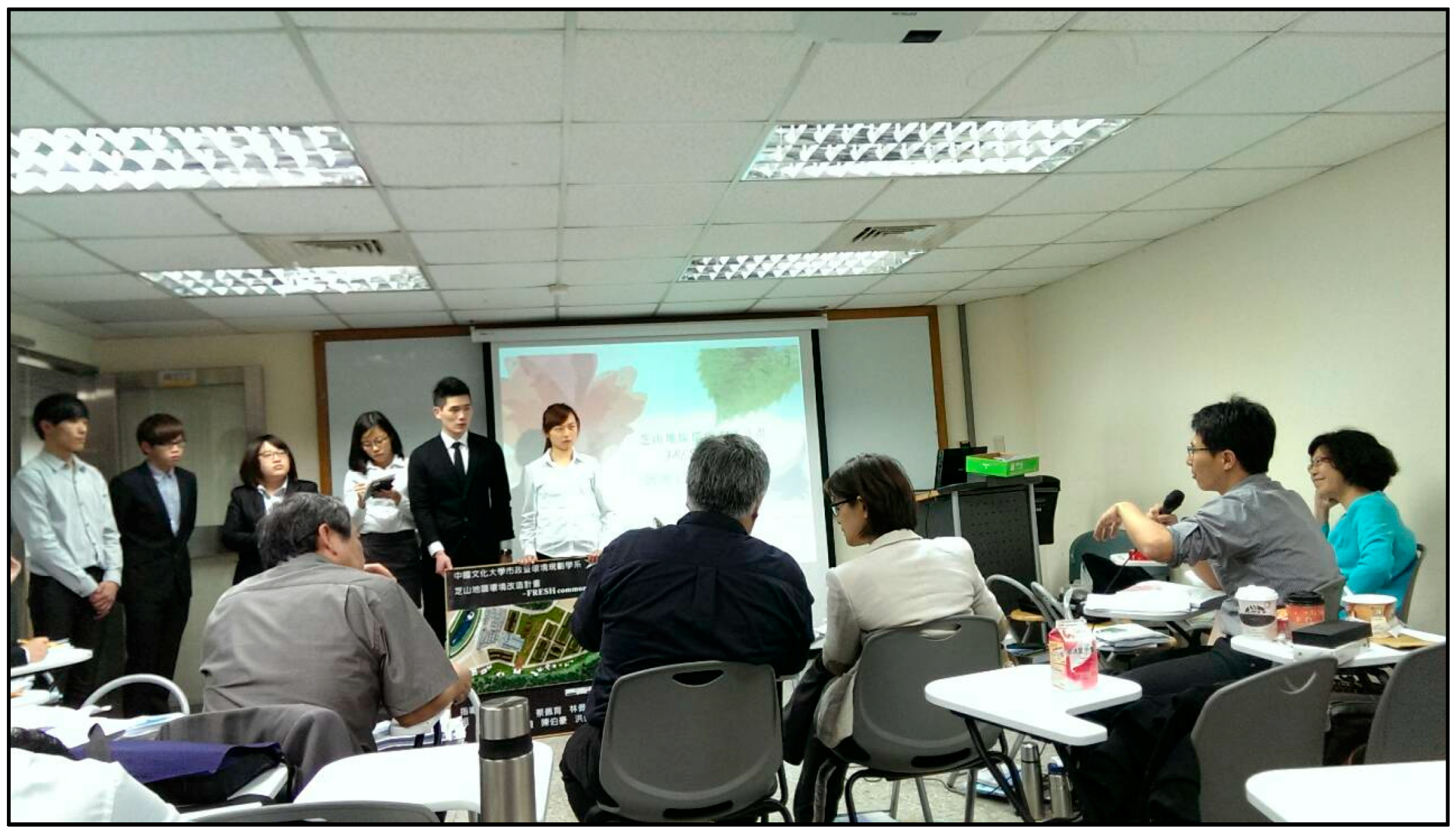
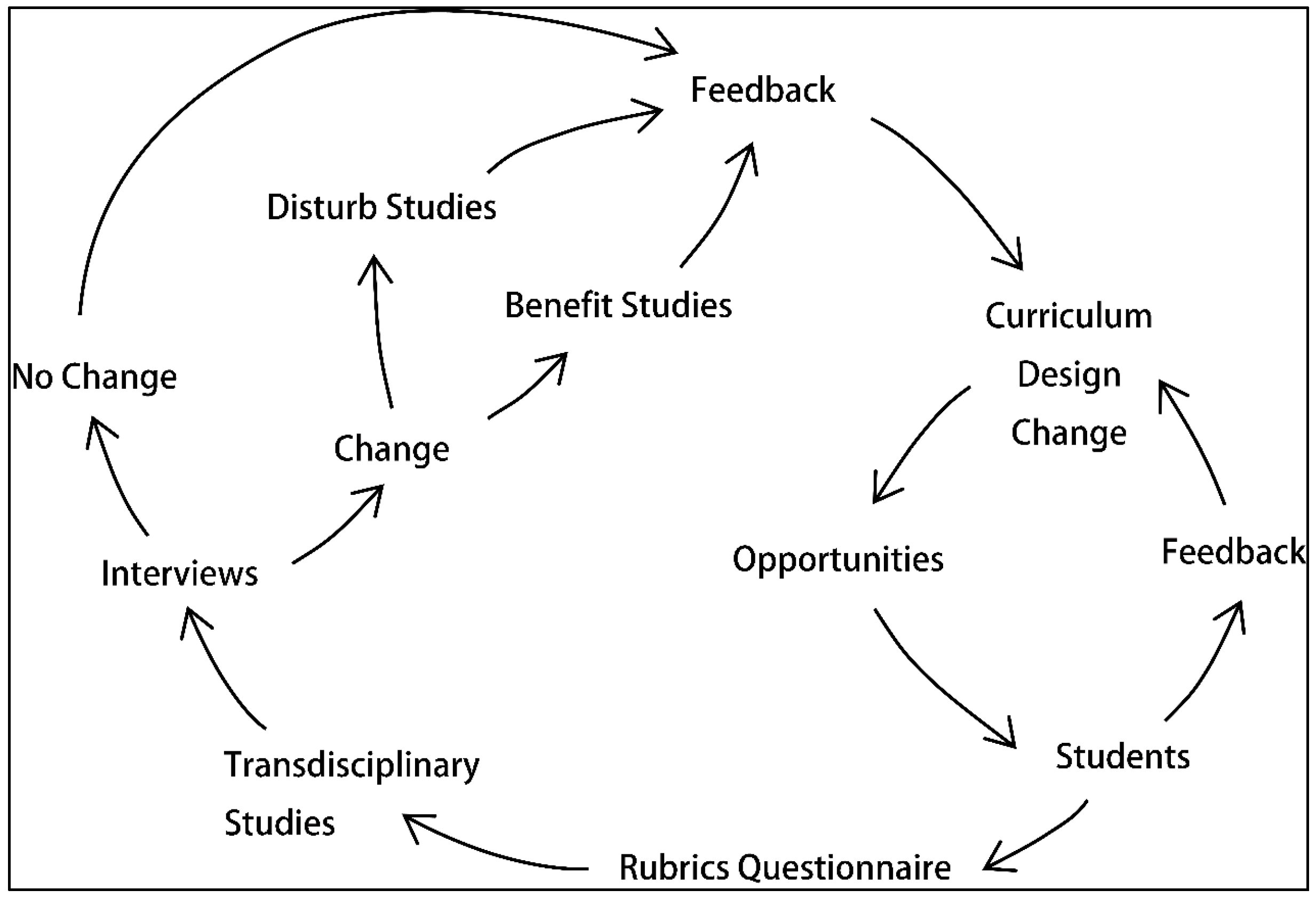
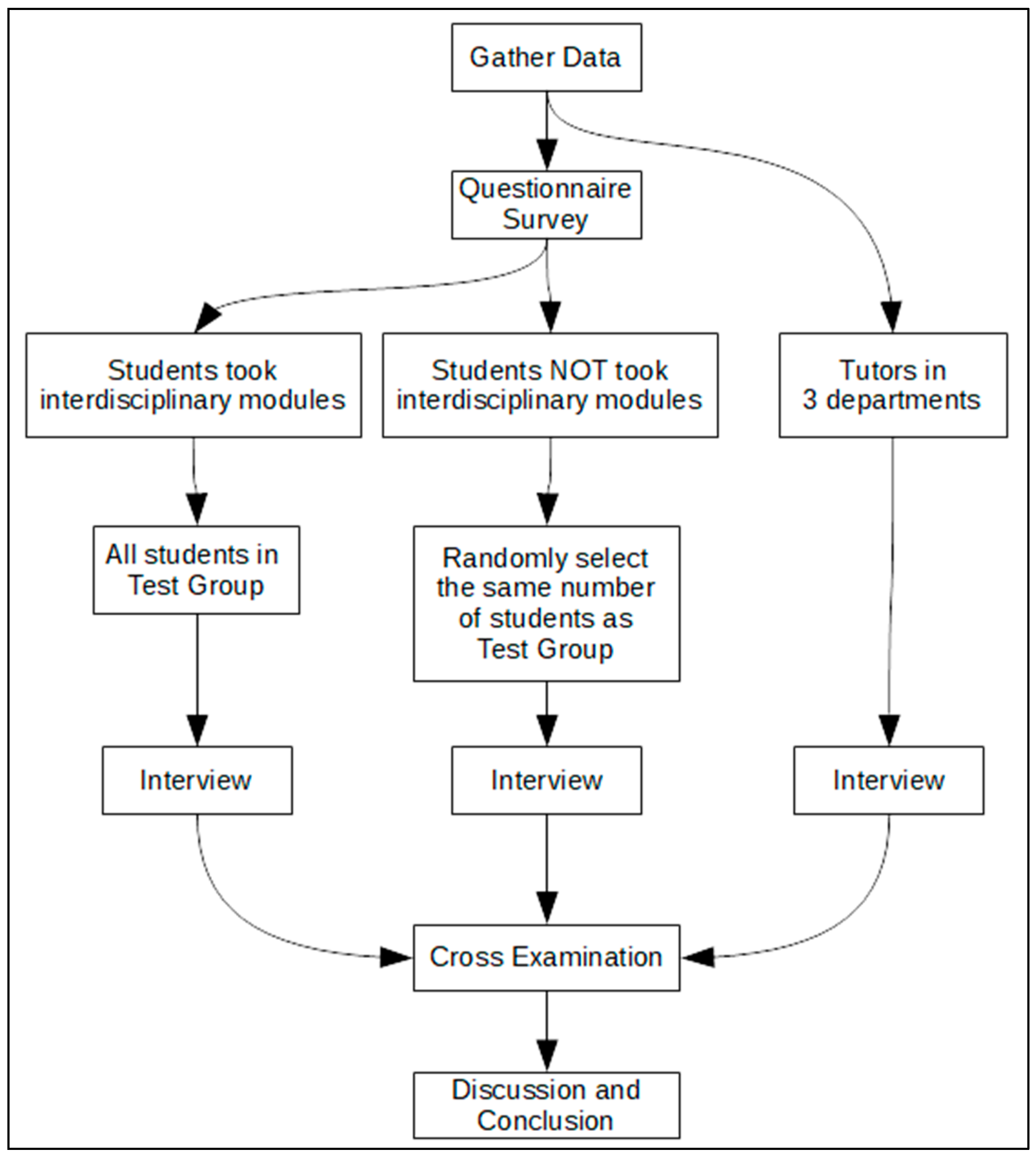
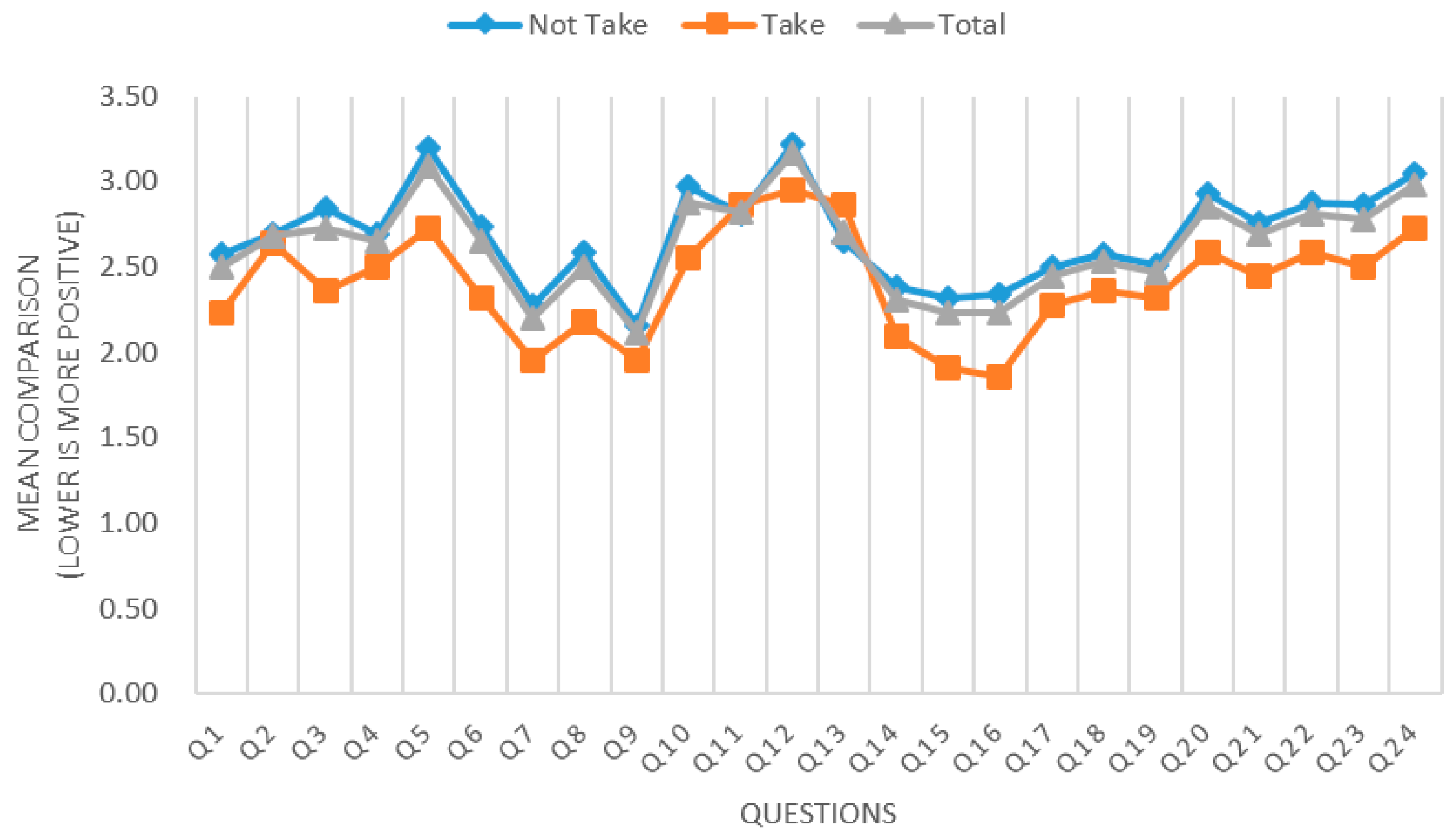
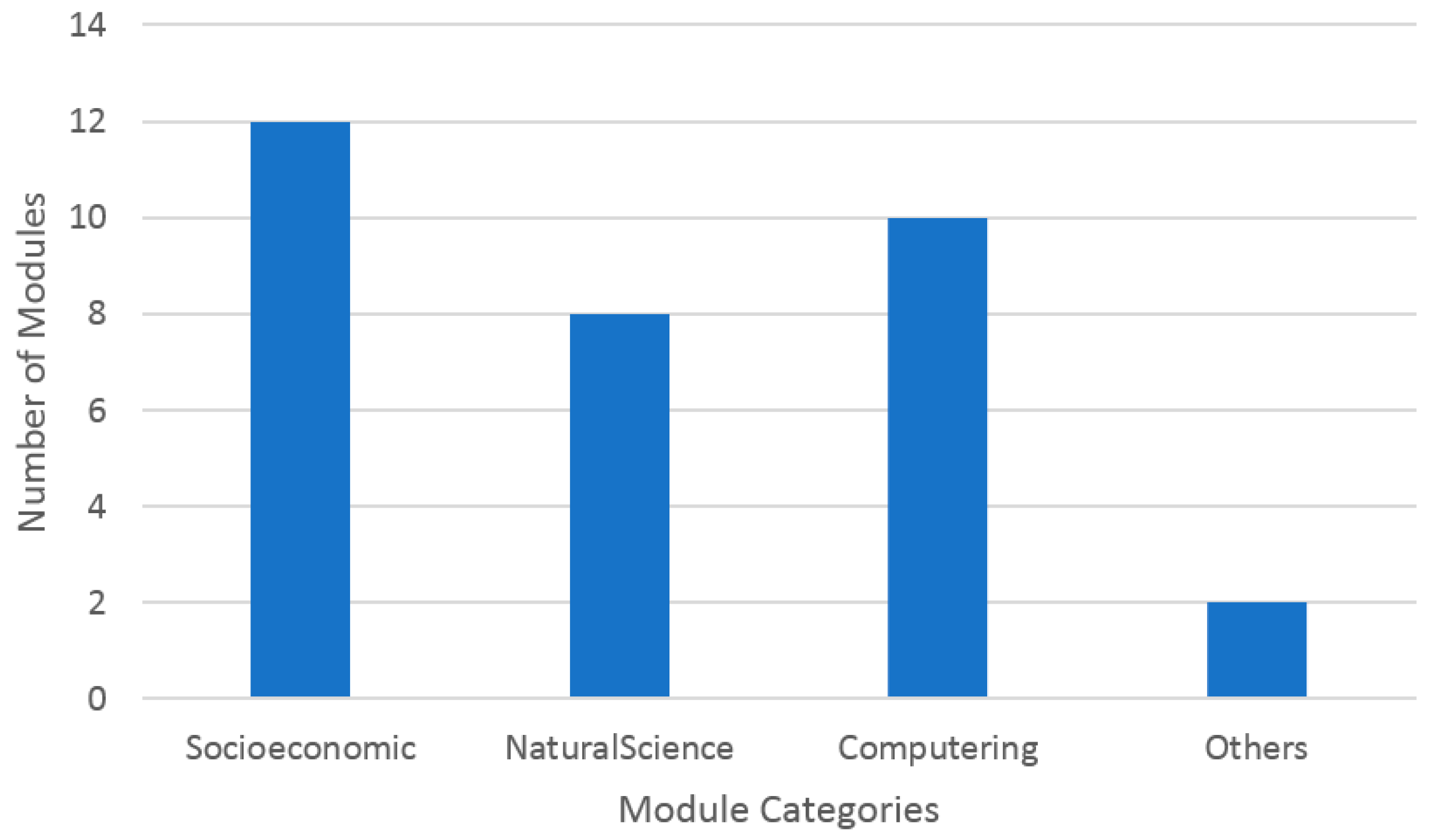

| Frequency | Percent | Valid Percentage | Cumulative Percentage | ||
|---|---|---|---|---|---|
| Valid | No | 74 | 77.1 | 77.1 | 77.1 |
| Yes | 22 | 22.9 | 22.9 | 100.0 | |
| Total | 96 | 100.0 | 100.0 | ||
© 2017 by the authors. Licensee MDPI, Basel, Switzerland. This article is an open access article distributed under the terms and conditions of the Creative Commons Attribution (CC BY) license (http://creativecommons.org/licenses/by/4.0/).
Share and Cite
Yu, C.-Y.; Chiang, Y.-C. Designing a Climate-Resilient Environmental Curriculum—A Transdisciplinary Challenge. Sustainability 2018, 10, 77. https://doi.org/10.3390/su10010077
Yu C-Y, Chiang Y-C. Designing a Climate-Resilient Environmental Curriculum—A Transdisciplinary Challenge. Sustainability. 2018; 10(1):77. https://doi.org/10.3390/su10010077
Chicago/Turabian StyleYu, Cheng-Yu, and Yi-Chang Chiang. 2018. "Designing a Climate-Resilient Environmental Curriculum—A Transdisciplinary Challenge" Sustainability 10, no. 1: 77. https://doi.org/10.3390/su10010077





